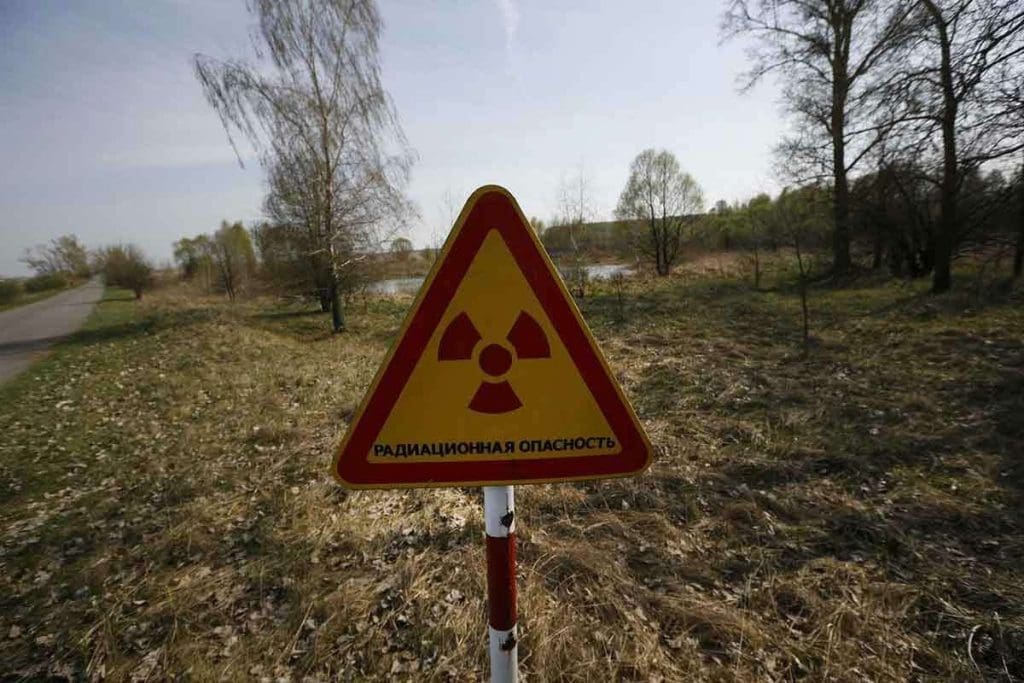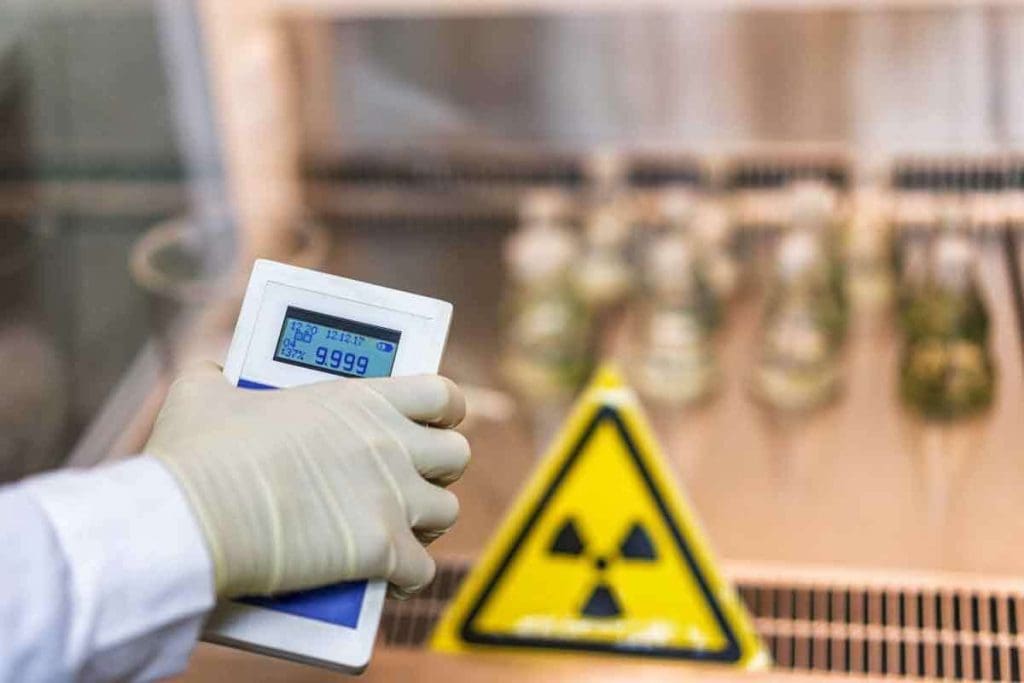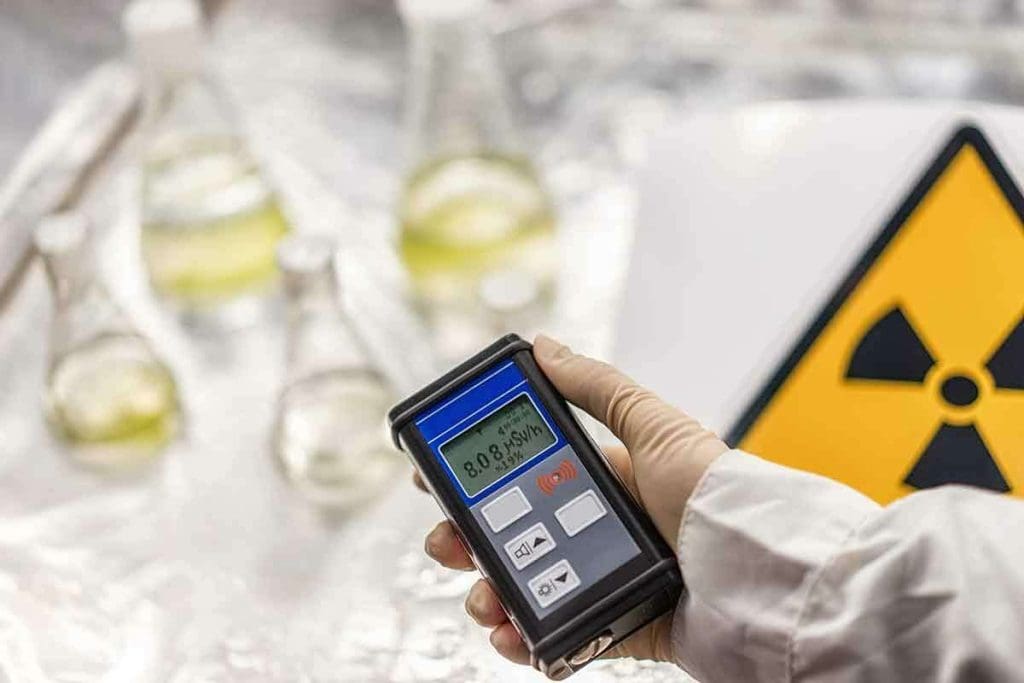Last Updated on November 27, 2025 by Bilal Hasdemir

As medical technology advances, understanding the diverse types of radiation is vital for both healthcare providers and patients. At Liv Hospital, known for its patient-centered approach and commitment to innovative care, recognizing the role of radiation in medical procedures is essential for delivering superior outcomes.Understand ex of radiation by exploring practical and scientific examples of radiation found all around us.
Radiation is the release of energy in the form of moving waves or particles, and it has various applications in medicine and industry. We will explore the five main types of radiation and their practical examples, providing insights into their applications in medical settings.
Key Takeaways
- Understanding the different types of radiation is crucial for medical applications.
- Liv Hospital is committed to delivering world-class healthcare with a patient-centered approach.
- Radiation has various applications in medicine and industry.
- The five main types of radiation will be explored with practical examples.
- Recognizing the role of radiation is essential for superior medical outcomes.
Understanding Radiation: Basic Concepts and Principles

The concept of radiation encompasses a broad range of energy types that permeate our environment. Radiation is not just a phenomenon associated with nuclear power plants or medical facilities; it’s a natural part of our world, emanating from the sun, cosmic rays, and even from certain building materials.
As we explore the basics of radiation, it’s essential to understand its fundamental principles and how it interacts with our surroundings. We will delve into the different types of radiation, their characteristics, and how they are measured.
What Is Radiation and How Does It Work?
Radiation is energy that travels through space or matter. It can be classified into two main categories based on its ability to ionize atoms: ionizing and non-ionizing radiation. Ionizing radiation has enough energy to remove tightly bound electrons from atoms, thus creating ions. This type of radiation includes alpha particles, beta particles, gamma rays, and X-rays. On the other hand, non-ionizing radiation has less energy but is still capable of causing atoms to vibrate or rotate. Examples include radio waves, microwaves, and visible light.
Ionizing vs. Non-Ionizing Radiation
The distinction between ionizing and non-ionizing radiation is critical due to their different effects on biological tissues and materials. Ionizing radiation, being more energetic, can cause damage to living cells, potentially leading to cancer or genetic mutations if not properly controlled. Non-ionizing radiation, while generally considered safer, can still cause heating of tissues or other effects, especially at high intensities.
To illustrate the differences, let’s consider a comparison:
| Characteristics | Ionizing Radiation | Non-Ionizing Radiation |
| Energy Level | High | Low to Moderate |
| Examples | Alpha, Beta, Gamma, X-rays | Radio waves, Microwaves, Visible Light |
| Biological Effects | Can cause DNA damage, cancer | Heating of tissues, other effects at high intensities |
Measuring Radiation: Units and Terminology
Understanding the units used to measure radiation is vital for assessing exposure levels and risks. The becquerel (Bq) measures the activity of a radioactive source, indicating how many nuclei decay per second. The sievert (Sv) measures the biological effect of radiation, taking into account the type of radiation and its energy. For instance, when discussing radiation exposure, saying someone received a dose of 1 Sv implies a significant biological risk.
We use these units to quantify radiation exposure from various sources, whether it’s from natural background radiation, medical procedures, or industrial applications. By understanding these concepts, we can better appreciate the role of radiation in our lives and the measures taken to ensure safety.
Alpha Radiation: Properties and Real-World Ex of Radiation

Understanding alpha radiation is essential for harnessing its potential in medicine, energy production, and research. Alpha particles are high-energy helium nuclei emitted from radioactive materials. They have limited penetration but are highly ionizing.
Characteristics of Alpha Particles
Alpha particles have several distinct characteristics that make them useful in various applications. They are:
- Highly Ionizing: Alpha particles can cause significant ionization in materials they interact with, making them effective in certain medical treatments.
- Limited Penetration: Due to their large mass and charge, alpha particles have a short range in matter and can be stopped by a sheet of paper or the outer layers of human skin.
- High Energy: Alpha particles are emitted with high energies, typically in the range of a few MeV.
Sources of Alpha Radiation in Nature and Technology
Alpha radiation is found naturally in certain elements, such as uranium and thorium. These elements undergo radioactive decay, emitting alpha particles. Additionally, alpha radiation is produced artificially in nuclear reactors and accelerators for various applications.
Practical Applications in Medicine and Industry
Alpha radiation has several practical applications:
- Medical Applications: Alpha particles are used in targeted alpha therapy for cancer treatment, where they are directed at cancer cells to minimize damage to surrounding healthy tissue.
- Industrial Applications: Alpha radiation is used in various industrial processes, including radioisotope thermoelectric generators (RTGs) that provide power for space missions and remote locations.
- Research Applications: Scientists use alpha particles to study nuclear reactions and the properties of materials at the nuclear level.
By understanding and harnessing alpha radiation, we can continue to advance in fields such as medicine, energy, and scientific research, improving our quality of life and expanding our knowledge of the universe.
Beta Radiation: Understanding Its Nature and Applications
Understanding beta radiation is essential for harnessing its potential in advancing medical treatments and technological innovations. Beta radiation consists of high-energy electrons or positrons emitted from the nucleus of an atom. This type of radiation is more penetrating than alpha particles but can be stopped by a thin layer of material.
Properties and Behavior of Beta Particles
Beta particles are characterized by their small mass and high energy, allowing them to travel significant distances in tissue. They can be either negatively charged (electrons) or positively charged (positrons), influencing their interaction with matter. The penetration power of beta radiation is greater than that of alpha particles, requiring denser materials to stop them.
We utilize beta radiation in various applications due to its unique properties. For instance, its ability to penetrate tissues makes it valuable in medical treatments.
Natural and Artificial Beta Radiation Sources
Beta radiation occurs naturally in certain isotopes, such as potassium-40, which is present in the human body and the Earth’s crust. Artificial sources include nuclear reactors and particle accelerators, which produce a wide range of beta-emitting isotopes used in medicine and industry.
We also encounter beta radiation in various industrial processes, where it is used for thickness measurements and in certain types of radiation gauges.
Medical and Industrial Examples
In medicine, beta radiation is used in targeted therapies, such as in the treatment of certain cancers. For example, beta-emitting isotopes are used in radioimmunotherapy to target cancer cells specifically. Industrially, beta radiation is applied in processes like radiation processing of materials and in the manufacture of certain medical devices.
We continue to explore new applications of beta radiation, enhancing its role in both medical treatments and industrial processes. By understanding its properties and behavior, we can better harness its potential for various uses.
Gamma Radiation: High-Energy Electromagnetic Waves
Gamma radiation, characterized by its high energy and penetrating power, is utilized in cancer treatments and industrial processes. As a form of ionizing radiation, gamma rays have significant applications across various fields.
Physical Properties and Penetration Capabilities
Gamma radiation is emitted by radioactive nuclei and consists of high-energy electromagnetic waves. Its ability to penetrate deep into materials makes it particularly useful in medical and industrial applications.
The penetration power of gamma radiation is much higher than that of alpha or beta radiation, allowing it to pass through thick layers of materials, including human tissue.
Common Sources in Medicine and Industry
In medicine, gamma radiation is commonly used in cancer treatments, such as gamma knife radiosurgery, to target and destroy tumor cells.
Industrially, gamma radiation is used for sterilization of medical instruments, food irradiation, and in various inspection processes to detect flaws in materials.
Practical Applications and Case Studies
One of the significant applications of gamma radiation is in the treatment of cancer. Techniques like gamma knife radiosurgery allow for precise targeting of tumors with minimal damage to surrounding tissue.
In industry, gamma radiation is used for the sterilization of medical supplies and equipment, ensuring they are free from contaminants.
Key applications include:
- Cancer treatment
- Sterilization of medical instruments
- Food irradiation
- Material inspection
Gamma radiation’s unique properties make it a valuable tool in both medical and industrial fields. Its applications continue to grow as technology advances, providing new and innovative ways to utilize this form of ionizing radiation.
X-Rays: Diagnostic and Therapeutic Applications
As a cornerstone of modern medicine, X-rays play a crucial role in both diagnostic and therapeutic applications. We utilize X-rays in various medical procedures, from simple diagnostic imaging to complex therapeutic interventions.
Differentiating X-Rays from Other Radiation Types
X-rays are a form of electromagnetic radiation, distinct from alpha, beta, and gamma radiation due to their unique properties and applications. Unlike alpha and beta radiation, X-rays are not corpuscular but rather a form of energy. This characteristic allows X-rays to penetrate soft tissues but be absorbed by denser materials like bone, making them ideal for medical imaging.
X-Ray Production and Properties
X-rays are produced artificially using X-ray tubes, which generate high-energy electrons that collide with a metal target, typically tungsten. This process produces X-rays with a range of energies, which can be filtered and directed to create images of internal structures. The properties of X-rays, including their penetration depth and absorption rates, are crucial for their application in medical diagnostics.
Key properties of X-rays include:
- High energy levels, allowing for penetration through soft tissues
- Variable absorption rates depending on tissue density
- Ability to be directed and focused using collimators and filters
Everyday Examples in Medicine and Security
X-rays are ubiquitous in medical practice, used for diagnosing fractures, detecting foreign objects, and guiding certain treatments. In security, X-rays are used to screen luggage and cargo for prohibited items. Their ability to penetrate various materials makes them invaluable for both medical and security applications.
Examples of X-ray applications include:
- Diagnostic imaging in hospitals and clinics
- Guiding minimally invasive surgical procedures
- Security screening at airports and border crossings
Neutron Radiation: Properties and Specialized Uses
Among the different types of radiation, neutron radiation stands out due to its unique properties and specialized uses. Neutron radiation consists of free neutrons emitted by nuclear reactions, and it plays a significant role in various industrial and research applications.
Unique Characteristics of Neutron Radiation
Neutron radiation has several distinct characteristics that set it apart from other forms of radiation. It is highly penetrating and can travel significant distances through dense materials without being absorbed. This property makes it particularly useful for applications requiring deep penetration, such as in certain industrial processes and research experiments.
Another key characteristic of neutron radiation is its ability to induce radioactivity in certain materials. When neutrons interact with the nucleus of atoms, they can cause the atoms to become radioactive. This property is utilized in various applications, including neutron activation analysis, which is a technique used to determine the elemental composition of materials.
Sources and Generation Methods
Neutron radiation can be generated through various methods, including nuclear fission, nuclear fusion, and spallation reactions. Nuclear reactors are a common source of neutron radiation, as they produce neutrons through the fission process. Additionally, particle accelerators can be used to generate neutrons by accelerating protons or other particles to high energies and then colliding them with a target material.
Some research facilities and industrial applications use radioisotope neutron sources, which emit neutrons through spontaneous fission or other nuclear reactions. These sources provide a compact and relatively portable means of generating neutron radiation.
Real-World Applications and Examples
Neutron radiation has a wide range of applications across various fields. In materials science, neutron radiation is used to study the structure and properties of materials. Neutron diffraction, for example, is a technique used to determine the crystal structure of materials, providing valuable insights into their properties and behavior.
In the field of non-destructive testing, neutron radiation is used to inspect the internal structure of components and detect defects or flaws. This application is particularly useful in industries such as aerospace and nuclear energy, where the integrity of components is critical.
We also see neutron radiation being used in medical and research applications, including boron neutron capture therapy (BNCT), a type of cancer treatment that relies on the selective absorption of neutrons by boron atoms in cancer cells.
- Neutron radiation is used in materials science for studying material properties.
- It is applied in non-destructive testing to inspect internal structures.
- BNCT is a medical application that uses neutron radiation to treat cancer.
Radiation in Everyday Life: Common Exposures and Context
Radiation is an omnipresent force in our daily lives, emanating from both natural sources and human-made products. As we navigate our surroundings, we are exposed to various forms of radiation, some of which are more significant than others.
Natural Background Radiation Sources
Natural background radiation is a significant contributor to our overall radiation exposure. It comes from cosmic rays and radon gas, among other sources. Cosmic radiation, for instance, is more pronounced at higher altitudes, such as during flights or in mountainous regions.
Radon, a radioactive gas, seeps into homes and buildings from the soil, accumulating in poorly ventilated areas. According to the United States Environmental Protection Agency (EPA), radon exposure is a leading cause of lung cancer in non-smokers.
Consumer Products Containing Radiation
Some consumer products contain small amounts of radioactive materials. For example, smoke detectors often contain Americium-241, a radioactive isotope. Additionally, certain types of glass and ceramics may contain radioactive elements like uranium.
While the radiation emitted by these products is typically minimal, it’s essential to understand that even small sources can contribute to overall exposure over time.
Comparing Radiation Doses from Different Activities
To put radiation exposure into perspective, let’s compare doses from various activities. The table below illustrates the effective doses from common sources:
| Activity/Source | Effective Dose (mSv) |
| Chest X-ray | 0.1 |
| Flight from New York to Los Angeles | 0.03 |
| Smoking 1 pack of cigarettes per day for 1 year | 13-30 |
| Average annual background radiation in the US | 3 |
Putting Radiation Exposure in Perspective
Understanding the relative risks associated with different radiation exposures can help alleviate concerns. As NCRP Report No. 160 notes, “the risk from radiation exposure is not solely determined by the dose, but also by the dose rate and the sensitivity of the exposed tissues.”
“The radiation dose from a single chest X-ray is relatively small compared to the dose from a cross-country flight or a year of background radiation exposure.”
NCRP Report No. 160
By comparing these doses, we can better understand the context of our daily radiation exposures and make informed decisions about our health.
Liv Hospital’s Advanced Radiation Protocols and Technologies
Liv Hospital stands at the forefront of radiation oncology, leveraging the latest advancements in treatment protocols and technology. Our commitment to delivering high-quality care is reflected in our state-of-the-art radiation therapy programs.
At Liv Hospital, we understand the importance of precision and accuracy in radiation therapy. That’s why we utilize advanced technologies such as Intensity-Modulated Radiation Therapy (IMRT) and Stereotactic Body Radiation Therapy (SBRT). These technologies enable us to target tumors effectively while minimizing exposure to surrounding healthy tissues.
Our radiation oncology department is equipped with cutting-edge equipment, allowing us to offer a range of treatment options tailored to each patient’s needs. We are committed to ongoing innovation, ensuring that our patients receive the most effective and advanced care available.
| Treatment Type | Description | Benefits |
| IMRT | Intensity-Modulated Radiation Therapy delivers precise doses of radiation to tumors. | Minimizes damage to surrounding healthy tissues. |
| SBRT | Stereotactic Body Radiation Therapy targets tumors with high doses of radiation in a few fractions. | Effective for treating small, well-defined tumors. |
| 3D-CRT | Three-Dimensional Conformal Radiation Therapy delivers radiation beams from multiple angles. | Provides accurate targeting of tumors. |
At Liv Hospital, our team of experts works closely with patients to determine the most appropriate radiation therapy plan. We are dedicated to providing compassionate care and support throughout the treatment process.
Understanding Radiation: Basic Concepts and Principles
At its core, radiation involves the emission and transmission of energy through space. This fundamental concept is crucial for understanding various phenomena in physics, medicine, and technology.
What Is Radiation and How Does It Work?
Radiation is a process where energy is released and travels through a medium, such as air or vacuum. This energy can take various forms, including electromagnetic waves and high-speed particles. The mechanism of radiation involves the transition of energy from a higher state to a lower state, often resulting in the emission of photons or particles.
We observe radiation in various natural phenomena, such as cosmic rays and radioactive decay. Understanding how radiation works is essential for harnessing its potential in medical treatments, industrial applications, and scientific research.
Ionizing vs. Non-Ionizing Radiation
Radiation is broadly classified into two categories: ionizing and non-ionizing. Ionizing radiation has sufficient energy to remove tightly bound electrons from atoms, resulting in the formation of ions. This type of radiation includes alpha particles, beta particles, and gamma rays, which are known for their potential to cause damage to living tissues and DNA.
Non-ionizing radiation, on the other hand, has lower energy and is unable to ionize atoms. Examples include radio waves, microwaves, and visible light. While non-ionizing radiation is generally considered safer, high intensities can still cause heating and other effects.
Measuring Radiation: Units and Terminology
To quantify radiation, various units are used. The Sievert (Sv) is a measure of the biological effect of radiation, taking into account the relative sensitivity of different tissues and the type of radiation. Other units, such as the Gray (Gy) and Becquerel (Bq), measure absorbed dose and activity, respectively.
Understanding these units and their applications is crucial for professionals working with radiation, as well as for the general public to grasp the risks and benefits associated with radiation exposure.
Alpha Radiation: Properties and Real-World Ex of Radiation
Alpha particles, consisting of two protons and two neutrons, are a form of radiation with unique properties. These particles are emitted by radioactive materials and play a significant role in various applications.
Characteristics of Alpha Particles
Alpha particles are relatively large and carry a double positive charge, which makes them interact strongly with matter. Due to their mass and charge, alpha particles have a very short range in tissues and can be stopped by a sheet of paper or the outer layers of human skin.
Key characteristics of alpha particles include:
- High ionization power
- Short range in matter
- High LET (Linear Energy Transfer)
- Stopped by skin or paper
Sources of Alpha Radiation in Nature and Technology
Alpha radiation is emitted by certain radioactive isotopes found in nature, such as uranium-238 and radon-222. These isotopes are present in soil, rocks, and the atmosphere. Technologically, alpha radiation is utilized in various applications, including smoke detectors and certain medical treatments.
Some common sources of alpha radiation include:
| Source | Description |
| Uranium-238 | A naturally occurring isotope that emits alpha particles |
| Radon-222 | A radioactive gas that emits alpha radiation |
| Smoke detectors | Contain americium-241, an alpha emitter |
Practical Applications in Medicine and Industry
Alpha radiation has several practical applications due to its unique properties. In medicine, alpha particles are used in targeted alpha therapy to treat certain types of cancer. Industrially, alpha radiation is used in various processes, including radiography and material analysis.
We continue to explore and develop new applications for alpha radiation, leveraging its potential to improve medical treatments and industrial processes.
Beta Radiation: Understanding Its Nature and Applications
Understanding beta radiation is essential for harnessing its potential in fields ranging from medicine to nuclear energy. Beta radiation consists of beta particles, which are high-energy, high-speed electrons or positrons emitted by certain radioactive nuclei. We will explore the properties and behavior of these particles, their natural and artificial sources, and their applications in various industries.
Properties and Behavior of Beta Particles
Beta particles are characterized by their small mass and high energy. They can travel several meters in air and several millimeters in tissue before being absorbed. This property makes them useful for certain medical treatments and industrial applications.
Some key properties of beta particles include:
- High energy levels
- Small mass
- Ability to penetrate several millimeters into tissue
- Capability to be absorbed by certain materials
Natural and Artificial Beta Radiation Sources
Beta radiation occurs naturally in certain isotopes, such as tritium and carbon-14. Artificially, beta radiation is produced in nuclear reactors and particle accelerators, where it is used for various purposes, including medical isotope production and material irradiation.
Examples of natural and artificial sources include:
- Natural sources: Tritium, Carbon-14
- Artificial sources: Nuclear reactors, Particle accelerators
Medical and Industrial Examples
In medicine, beta radiation is used in treatments like brachytherapy for cancer. Industrially, it is used for thickness gauging and in certain types of radiation sterilization. We will examine these applications in more detail, highlighting their benefits and challenges.
Some notable examples include:
- Brachytherapy for cancer treatment
- Thickness gauging in industrial manufacturing
- Radiation sterilization of medical instruments
Gamma Radiation: High-Energy Electromagnetic Waves
Among the various types of radiation, gamma radiation stands out due to its high-energy nature and ability to penetrate deep into materials. This characteristic makes gamma radiation both highly useful and potentially hazardous, depending on its application and control.
Physical Properties and Penetration Capabilities
Gamma radiation is composed of high-energy photons emitted by the nucleus of an atom during certain types of radioactive decay. Its ability to penetrate materials is significantly higher than alpha or beta radiation, making it a valuable tool in various industries. The penetration capability of gamma radiation depends on the energy of the photons and the density of the material it is passing through.
Common Sources in Medicine and Industry
Gamma radiation is utilized in medicine for diagnostic and therapeutic purposes, such as in cancer treatment through gamma knife radiosurgery. In industry, gamma radiation is used for sterilization of medical instruments and food irradiation. It is also employed in the inspection of welds and in certain types of non-destructive testing.
Practical Applications and Case Studies
The applications of gamma radiation are diverse and continue to expand. For instance, in medicine, gamma radiation is used not only for treatment but also for diagnostic imaging. In industrial settings, gamma radiation is used to improve the quality and safety of products. A notable case study involves the use of gamma radiation for sterilizing medical supplies, which has become a standard practice due to its effectiveness and efficiency.
We continue to explore new applications of gamma radiation, pushing the boundaries of what is possible in both medical and industrial fields. By understanding and harnessing the power of gamma radiation, we can develop innovative solutions to complex problems.
X-Rays: Diagnostic and Therapeutic Applications
X-rays are a cornerstone of modern medicine, used in both diagnosis and treatment. We utilize X-rays in various medical applications, from simple diagnostic imaging to complex therapeutic interventions.
Differentiating X-Rays from Other Radiation Types
X-rays are a form of electromagnetic radiation, distinct from other types such as alpha, beta, and gamma radiation. Unlike alpha and beta radiation, X-rays are not particulate; they are purely electromagnetic waves. This characteristic allows X-rays to penetrate soft tissues, making them invaluable for medical imaging.
Key differences between X-rays and other radiation types include:
- Electromagnetic nature, as opposed to particulate radiation
- Ability to penetrate soft tissues
- Applications primarily in medical imaging and therapy
X-Ray Production and Properties
X-rays are produced when high-energy electrons collide with a metal target, typically tungsten, in an X-ray tube. The energy of the X-rays is controlled by adjusting the voltage applied across the tube. This control allows for the production of X-rays with varying energies, suitable for different applications.
The properties of X-rays, such as their penetration power and image quality, are crucial for their medical applications. The ability to adjust the X-ray energy enables healthcare professionals to optimize image quality while minimizing radiation exposure to patients.
Everyday Examples in Medicine and Security
X-rays are widely used in medical diagnostics, including dental imaging, mammography, and fluoroscopy. In security, X-rays are used for screening luggage and packages at airports and other secure facilities.
We see X-rays being used in various everyday applications, from medical diagnostics to security screening. Their versatility and the valuable information they provide make them an indispensable tool in many fields.
Neutron Radiation: Properties and Specialized Uses
As a highly specialized form of radiation, neutron radiation has distinct characteristics that set it apart from other types. Neutron radiation consists of free neutrons that are released as a result of nuclear reactions or radioactive decay. These neutrons can interact with atomic nuclei, making them useful in various applications.
Unique Characteristics of Neutron Radiation
Neutron radiation is characterized by its high penetration depth and the ability to induce nuclear reactions. Unlike alpha or beta radiation, neutron radiation can pass through dense materials, making it invaluable for certain industrial and medical applications. The energy spectrum of neutron radiation can vary, influencing its interaction with matter.
Sources and Generation Methods
Neutron radiation can be generated through various methods, including nuclear fission, fusion reactions, and spallation. Research reactors and accelerators are common sources of neutron radiation for scientific and industrial purposes. Radioactive isotopes like californium-252 are also used as neutron sources.
Real-World Applications and Examples
Neutron radiation is applied in several fields, including medicine, where it is used in boron neutron capture therapy for cancer treatment. In industry, neutron radiography is utilized for non-destructive testing of materials. Research applications include the study of material properties and the behavior of neutrons in various environments.
| Field | Application | Benefit |
| Medicine | Boron Neutron Capture Therapy | Targeted cancer treatment |
| Industry | Neutron Radiography | Non-destructive material testing |
| Research | Material Science Studies | Understanding material properties |
Radiation in Everyday Life: Common Exposures and Context
Understanding radiation in our everyday environment is crucial for assessing its impact on our health. We are surrounded by radiation from various sources, some of which are natural and others that are man-made.
Natural Background Radiation Sources
Natural background radiation is present everywhere and comes from sources such as cosmic rays from outer space and radionuclides in the earth’s crust. Radon gas, a byproduct of uranium decay, is a significant contributor to background radiation and can accumulate in homes, particularly in basements.
We are exposed to varying levels of natural background radiation depending on our geographical location. For instance, areas with higher altitudes or certain geological formations can have higher levels of background radiation.
Consumer Products Containing Radiation
Some consumer products contain small amounts of radioactive materials. Examples include smoke detectors, which contain americium-241, and certain types of glassware that contain uranium.
While the radiation from these products is typically very low, it’s essential to understand that even everyday items can be sources of radiation exposure.
Comparing Radiation Doses from Different Activities
To put radiation exposure into perspective, it’s helpful to compare doses from various activities. For example, a typical chest X-ray delivers a dose of about 10 microsieverts, while a flight from New York to Los Angeles can expose a person to around 30 microsieverts due to cosmic radiation.
Understanding these comparisons can help individuals make informed decisions about their radiation exposure.
Putting Radiation Exposure in Perspective
It’s crucial to understand that not all radiation exposure is the same. The impact of radiation on health depends on the dose and type of radiation. By being aware of the sources of radiation in our daily lives and taking appropriate precautions, we can minimize our exposure.
We should also recognize that some level of radiation exposure is unavoidable. However, by understanding the risks and benefits, we can make informed choices about our health and safety.
Liv Hospital’s Advanced Radiation Protocols and Technologies
At Liv Hospital, we are committed to delivering cutting-edge radiation therapy with our advanced protocols and technologies. Our team of experts utilizes the latest innovations in radiation oncology to provide personalized care for patients undergoing cancer treatment.
We employ a range of radiation types, including Gamma Radiation, Beta Radiation, and X-Rays, each selected based on the specific needs of the patient. For instance, Gamma Radiation is often used for treating thyroid cancer with Iodine-131 (131I), while Beta Radiation is utilized with Yttrium 90 (90Y) for hepatic tumors. For more information on the different types of radiation emissions and their decay, you can refer to resources such as Stanford University’s radiation protection guidance.
Our advanced radiation protocols are designed to maximize efficacy while minimizing side effects. By leveraging the latest technologies and treatment methodologies, we ensure that our patients receive the highest quality care. Our commitment to staying at the forefront of radiation oncology enables us to offer effective treatment options for a variety of cancers and conditions.
FAQ
What are the main types of radiation?
The five main types of radiation are alpha radiation, beta radiation, gamma radiation, X-rays, and neutron radiation. Each type has distinct properties and applications in medicine, industry, and everyday life.
What is the difference between ionizing and non-ionizing radiation?
Ionizing radiation has enough energy to remove tightly bound electrons from atoms, resulting in the formation of ions. Examples include alpha, beta, gamma radiation, and X-rays. Non-ionizing radiation, on the other hand, has lower energy and cannot ionize atoms. Examples include radio waves, microwaves, and visible light.
How is radiation measured?
Radiation is measured using units such as the Gray (Gy) for absorbed dose, Sievert (Sv) for dose equivalent, and Becquerel (Bq) for activity. Understanding these units is crucial for assessing radiation exposure and its potential effects on humans.
What are the practical applications of alpha radiation?
Alpha radiation is used in medicine for targeted cancer therapies, such as in the treatment of certain types of leukemia. It is also used in industrial applications, including smoke detectors and in the production of certain isotopes.
How is beta radiation used in medicine?
Beta radiation is used in various medical applications, including cancer treatment through targeted therapy, where beta-emitting isotopes are used to destroy cancer cells. It is also used in certain diagnostic procedures.
What are the uses of gamma radiation?
Gamma radiation is used in cancer treatment, particularly in radiation therapy to kill cancer cells. It is also used in medical imaging, sterilization of medical instruments, and in industrial applications such as radiation processing.
How are X-rays used in medical diagnostics?
X-rays are widely used in medical imaging to visualize the internal structures of the body, such as bones, lungs, and other organs. They are used for diagnostic purposes, including detecting fractures, infections, and other conditions.
What are the sources of natural background radiation?
Natural background radiation comes from sources such as cosmic rays from outer space, radon gas from the earth, and naturally occurring radioactive materials in the environment, such as uranium and thorium.
How does radiation exposure from consumer products compare to other sources?
Radiation exposure from consumer products, such as smoke detectors and certain types of glass, is generally very low compared to natural background radiation and medical procedures. However, it’s essential to understand the relative risks and benefits.
What are Liv Hospital’s advanced radiation protocols?
Liv Hospital employs state-of-the-art radiation technologies and protocols to ensure precise and effective treatment, particularly in cancer care. Our protocols are designed to maximize therapeutic benefits while minimizing exposure and side effects.
Reference
- Uses of Radiation – U.S. Nuclear Regulatory Commissionhttps://www.nrc.gov/about-nrc/radiation/around-us/uses-radiation






